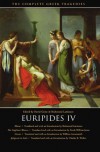Currently reading
A New History of Korea , by Lee Ki-baik


Naksan-sa Temple, founded in 671 and repeatedly destroyed and rebuilt
A New History of Korea: A one volume history of Korea till 1960, starting with the Paleolithic Age.(!) So, much is left on the cutting room floor and everything depends on the interests and judiciousness of the author, Korean historian Lee Ki-baik, who is primarily concerned with political history in this book, though aspects of social, economic and cultural history do receive some serious attention. Those conversant with European history will recognize the ever shifting struggle for power between monarchs, their relatives, the aristocracy and ambitious generals, but there is another element in the Korean mix - though generally less important and less broadly drawn from the population than it was in China, the class of cultured government officials was occasionally a crucial factor in political and nearly always in cultural developments.
Though early in their history the Koreans had no compunction about dominating their weaker neighbors, most of Korean history has been marked by striving to survive in the face of aggression by much stronger and more populous peoples. And when they weren't fighting with the Chinese, Mongols, Manchurians or Japanese, they were fighting with each other. There hasn't been much time for moments like this:

Shin Yun-bok (1758-after 1813)
It was always mysterious to me why Korea was called the "Hermit Kingdom" in the USA, since it was Japan that closed itself to nearly all foreign contacts for nearly three centuries. Witnessing uneasily what the Western powers were doing to China and Japan and how fast Catholicism was spreading in Korea, the Korean government closed the gates to all foreign contacts (excepting the Chinese) in 1866. This led to clashes with contingents of the French navy in 1866 and of the American navy in 1871. But the Western powers were too occupied slicing up China to invest serious effort in the little Korean peninsula. So it was the Japanese who slowly imposed their hegemony upon the Koreans, culminating in the annexation of Korea into the Japanese Empire in 1910 accompanied by a thorough attempt to stamp out the Korean culture entirely until the liberation of the peninsula in 1945, quickly followed by further horrors.
A New History of Korea was written by a Korean for Koreans, which has its advantages and its disadvantages. One of the disadvantages was ameliorated by the translator, Edward W. Wagner, who interpolated explanations of matters of common knowledge to Koreans but not to the rest of us. Because nearly all of the sources Lee employed are yet untranslated, Wagner replaced Lee's extensive bibliography with an annotated but relatively modest bibliography of texts available in English. In 1984, when the translation was completed in synchronization with another of the multiple revisions Lee made as new discoveries piled up, not much was available in English, though the situation has improved a bit in the intervening years. Nonetheless, most histories of Korea in English still are principally concerned with the 20th century. Not this book. Lee's text is still regarded as one of the best syntheses. But it's just a beginning...

Bronze bell cast in 771 (3.33 meters high)
 4
4












